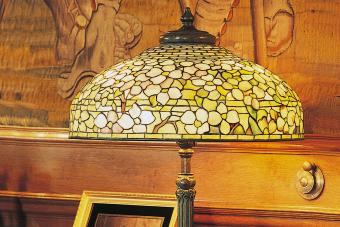
American made antique flintlock rifles are easily identified by their long stocks and barrels. They were generally accurate at distances up to three hundred yards. You can find them at antique stores or stores specializing in antique firearms.
The Flintlock Firing Mechanism
Developed in the early 1600s, the flintlock mechanism quickly gained favor over the wheellock mechanism on firearms. Not only were flintlocks much more reliable as a firing mechanisms, they were also much less expensive to manufacture. Based on simple principles, the flintlock mechanism worked in the following way:
- Cocking the trigger causes a hammer to fall forward and the steel striker, or frizzen, hits the flint.
- When the flint and frizzen hit it causes small shreds to fall off and spark.
- The sparking shreds fell into a small charge of gunpowder in the priming pan and the powder ignites.
- The ignition of the small amount of gunpowder causes the main gunpowder charge in the barrel to ignite and the ball is propelled forward.
Although early flintlock firearms included pistols and muskets, it was not until the early part of the 1700s that flintlock rifles began to come into the spotlight.
Rifling
Although rifling was first documented as early as the 1460s in Germany, throughout the 1600s and 1700s smooth barrel flintlocks were the norm and remained so for military use. However, many American gunsmiths in the 1700s rifled the barrels of their guns. When a gun is rifled, grooves are cut into the metal inside the gun barrel. The grooves help to keep the bullet stable in flight making it much more accurate than a smooth barreled gun.
In the 1720s, German craftsmen and gunsmiths living in Pennsylvania began designing and the building the forerunners of the very popular Pennsylvania, also known as Kentucky, Long Rifle.
The main disadvantage of flintlock rifles was the "fouling" that took place. Fouling is the buildup of gunpowder byproducts that occur inside the gun barrel when it is rifled. Due to the way flintlock rifles were loaded, it was often difficult to load the tight fitting ball down into the barrel after several shots were fired. Shooters needed to clean their rifles very often making them an excellent weapon for hunting and on the frontier but not a very good choice as a military weapon.
Identifying and Valuing Antique Flintlock Rifles
Many times identifying a flintlock rifle can be difficult since there were many made by the thousands of individual gunsmiths and very small manufacturing companies scattered throughout the country during the past centuries. Often the rifles were unsigned leaving a positive identification virtually impossible. When this occurs, valuation is made based on the rifles:
- Condition
- Construction quality
- Style
- Type and extent of decorative accents
- Probable maker
- Probable area where it was made
Flintlock Rifle Gunsmiths
The following are several of the well-known names of flintlock rifles:
- Springfield
- Griffin and Tow
- J.J&W.Jr HENR
- Harper's Ferry
- Baker
- J & W. Richards
- Parker and Field
- Hawkes
General Valuation Tips
- The signature on the barrel is generally the signature of the gunsmith. If the signature appears on the lock, it is usually the name of the manufacturer or supplier of the lock, not of the gunsmith.
- Generally, flintlock rifle collectors in the United States prefer antique rifles made in America followed by those made in the European countries of England, Germany, France and Italy.
- In the early 1800s, when the percussion firing mechanism was introduced, a great number of the flintlock mechanisms were converted to percussion rifles. Flintlock rifles that were converted to percussion rifles and then back to flintlocks have a lower value.
- Rifles with full stocks rather than half stocks typically have a higher value.
Examples of Flintlock Rifles
Many fine examples of these antique firearms are still found at auctions and from antique gun collectors and dealers. Depending on the specific piece, prices range from several hundred dollars to well into the tens of thousands.
The following includes images of several flintlock rifles and the online shops that offer them.
- Paul M. Ambrose Antiques offers many flintlock rifles including a rare English Baker rifle, circa 1815. Scroll to the 6th rifle from the top of the page to view the Baker priced at $18,995.
- Michael Simens, an antique firearms dealer, features many images of Kentucky flintlock long rifles with exquisite details including a Kentucky "Golden Age" flintlock, located approximately halfway down the page.
A Word of Caution
In today's marketplace there are many very accurate looking reproductions of antique flintlock rifles. If you are thinking of starting a collection, or adding to an existing one, be sure the flintlock rifle you are thinking of purchasing is original and authentic.







